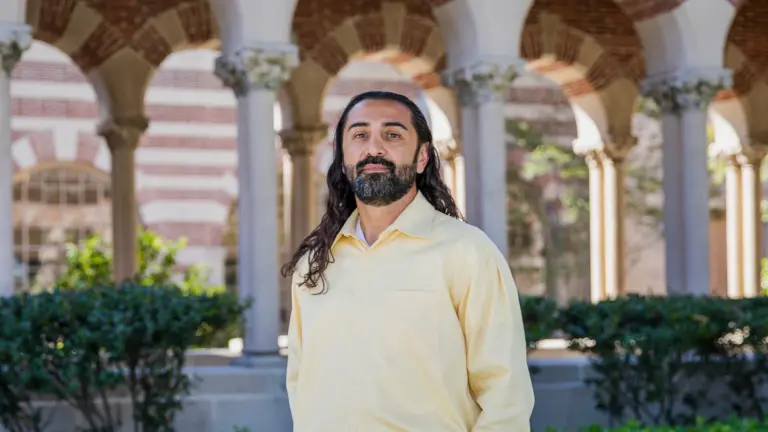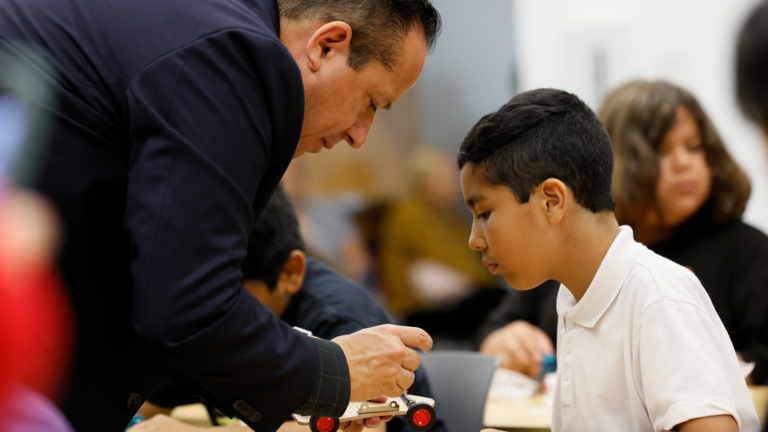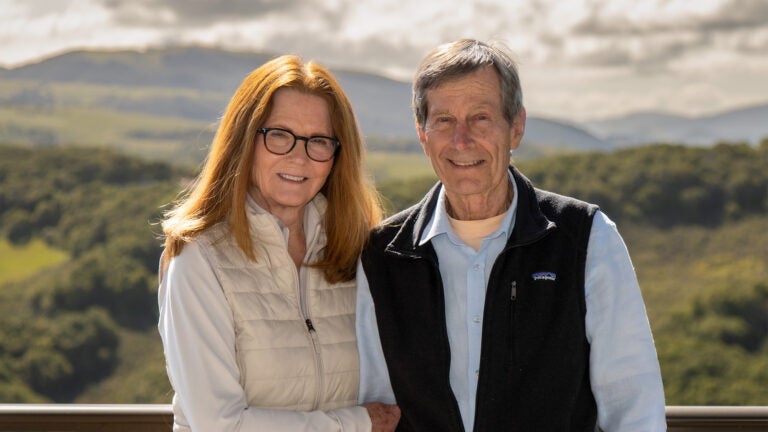Sustainability: Human Factors
RESEARCH SPOTLIGHT
Effective technology is available to move the needle on sustainability. The challenge is to implement these solutions quickly and at scale.
That’s why USC Dornsife is thinking differently. Our researchers explore how to overcome the economic, political, and psychological challenges that stand in the way of a sustainable future.
Congrats, Class of 2024!
USC Dornsife Class of 2024, you did it! Congratulations on earning your degrees. We at USC Dornsife are so proud of you for overcoming obstacles and accomplishing your goals. Hear from your fellow graduates in the class of 2024 about what makes them most proud.
Congrats, Class of 2024!
Get to Know Our Grads
The USC Dornsife Class of 2024 is making their mark. Learn about their aspirations, inspirations and achievements. Read More
In the News
Once Unhoused and Despite a Family Loss, USC Dornsife Senior Graduates and Heads to Yale Law School
Political science major Sophia Perez, fueled by personal experience with housing insecurity, advocates for tenants’ rights.
International Student Graduates with 4 Bachelor’s Degrees from USC Dornsife
Sibo “Carl” Zhou earns degrees in applied mathematics, religion, economics and data science, and global studies, and captures a USC Renaissance Scholar Prize in the process.
40-Something Single Father, Army Vet and Lifelong USC Fan Earns Bachelor’s Degree
Jaime Gomez, who spent six years in the U.S. Army and 16 years in the business world before becoming a first-generation college student, graduates with honors and an undergraduate degree in history.

Celebrating the Class of 2024
Find everything you need to know about USC Dornsife Commencement Ceremonies on Friday, May 10, 2024.

Laws Requiring Doctors to Report a Dementia Diagnosis to the DMV May Backfire
As the number of drivers 65 and older rises, USC Dornsife researchers investigate for the first time whether state DMV reporting mandates are associated with clinicians’ likelihood of underdiagnosing Alzheimer’s disease and other forms of dementia.
Curiosity at Work
Stand Out, Together
At USC Dornsife you’ll study the things you love the most. You’ll explore ideas that you’ve never thought about before. You’ll learn how to make sense of the world from all different angles. And, as part of our community, you will help to define a dynamic academic environment focused on improving lives and the world around us.
Meet the Students
USC Dornsife students demonstrate an impressive combination of academic excellence, accomplishment, creativity, and hard work. Each and every student is hand-selected because they bring something special and unique to our community.
A Brighter Future
Isabella Pangilinan Environmental Studies majorUSC Dornsife student Isabella Pangilinan is passionate about finding solutions to some of our world’s most pressing challenges like climate change and social and economic inequity. The multidisciplinary courses offered through her major are preparing her for a career in environmental law.
The Power of “And”
Joshua Senior Biological Sciences major, East Asian Languages and Cultures minorUSC Dornsife student Joshua Senior is studying to become a neurosurgeon. He explains how his liberal arts education at USC Dornsife prepares him for his career goals – and for life.
A Trojan Family Like No Other
Victoria Quon-Chow Human Biology major, Nutrition and Health Promotion minorAs a student at USC Dornsife, Victoria Quon-Chow is bouyed by the support of the Trojan Family as she prepares to become a doctor.
Unprecedented Access to Academic Expertise
Public Exchange fast-tracks collaboration between academic researchers and the public and private sectors to define, analyze, and solve complex problems that organizations face. Through our first-of-kind model, we amplify social impact by making academic expertise more easily accessible than ever before.
“Public Exchange provides the connective tissue that not only identifies appropriate expertise within the university to solve a particular problem, but it takes care of the contracts, project management, and other hurdles that have traditionally made collaboration with researchers challenging.”


Stand Out With Purpose
USC Dornsife’s Public Exchange creates streamlined pathways for public and private sector leaders to tap academic expertise. This model accelerates solutions to challenging social and environmental problems and enhances the social impact of academic research.
@USCDornsife
True, the Ph.D. Hooding Ceremony celebrates graduates who have reached the highest academic honor. But this moment of pride is absolutely shared by our faculty who know they played a part in mentoring the next generation of Trojan scholars and leaders.




























